(Those looking for a full review should start at part one of Ewan's review of the N85 production hardware).
Introductory note
Please bear in mind that these impressions, observations and pictures come from prototype hardware and software. As such they should be seen as indicative only, we will have to wait for production hardware and software before drawing any final conclusions.
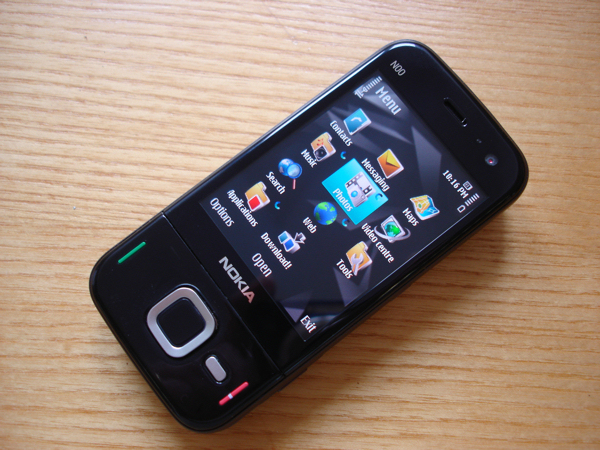
Design
The N85 follows the design language of the Nseries, first seen in the N81. However there are subtle differences; it is generally more rounded and smoother feeling than its predecessors and fits comfortably into the hand. First impression opinion on design is, as ever, very subjective and personal; for me, the N85 didn't have the same wow factor as the N78 or E71, but there's no immediate objective criticism I can offer either.
The front casing, a glossy black plastic, still attracts fingerprints, but seems to be easier to clean than the N78/N96. The sides of the device have the same hard plastics - this time in a brown colour. The back of the device has the familiar 3D 'adzed' plastics, also in brown. Colour variants are expected to be available sometime next year.
The overall build quality is excellent, the slider mechansim feels very solid and there is no side to side wobble, a definite improvement over the N95 family. The upper slider is slightly thicker and heavier than the N95, but if anything this makes the handset feel more balanced when held in the hand.
The screen is 2.6 inches in size, this is the same as the N95 classic, but 0.2 inches smaller than the N95 8GB and N96. For those looking to move over from the N95 8GB, this is the only real downside, but given the AM OLED screen technology (see below) is probably worthwhile.
The control cluster is generously spaced compared to previous dual sliders. The N85 8GB was restricted to a small area, for example (mainly because of the bigger screen). The D-pad/NaviWheel is well sized, which should make it easier to use. The S60, cancel and softkeys have intelligent illumination, they will fade away when not in use (e.g. in camera mode). Similarly, the multimedia controls on the top slide can change between being media controls (music and video) and gaming controls (N-Gage).
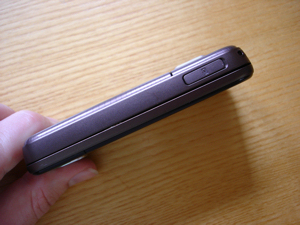
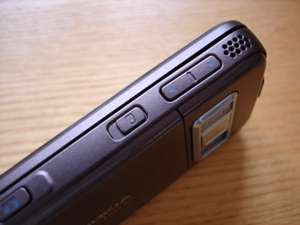
On the left hand side of the device there's the microSD card slot, while on the right side there's the camera capture key, a keylock slide button (a welcome return), and the volume rocker (doubles as a zoom key in Photos and Camera application, as usual). The twin stereo speakers are on opposite ends of the right side of the device.
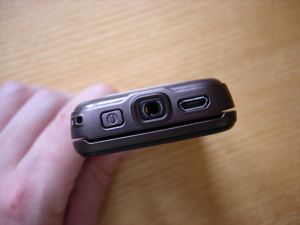
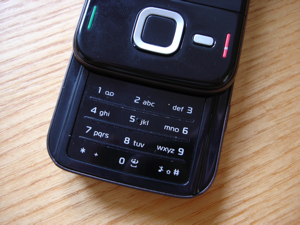
The top of the device houses the power key, the 3.5mm audio jack (also used for TV-out), the microUSB port (connectivity and charging) and a lanyard connection point. The numeric keypad is made of a single piece of flat plastic with small ridges separating each row. Each key still has its own key-dome (underneath the plastic) and tactile feedback is good. In its current state I'd rate the keypad as about the same as the N95 and better than the N81.
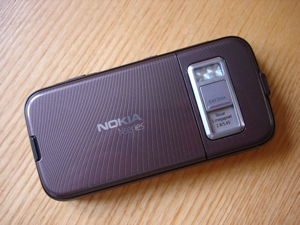
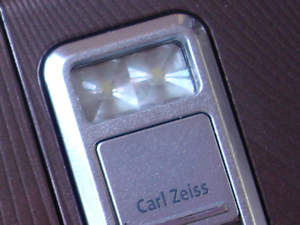
The back of the device houses the 5.0 megapixel camera, the lens of which is protected by a simple slide. The slide is easy to operate and built to last - an improvement over the N95 classic which tended to be a bit fiddly and 'gunge' up. In good conditions, you can expect broadly similar results to Nokia's other 5.0 megapixel camera devices. In dark conditions you should get better results, especially at close quarters, thanks to the improved 'dual LED' flash. However, it is not just the fact that there are two of them for improved performance - the micro optics have also been tweaked. The overall result is a flash that is roughly three times brighter than that of the N95 classic. While the dual LED flash will not freeze the moment like a Xenon flash does, it should go a long way to improving photo taking in low light conditions.
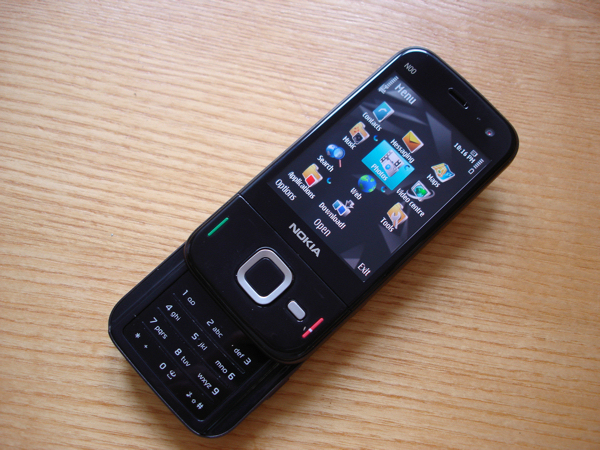
AM OLED screen in the real world
The difference that the N85's AM OLED screen makes compared to earlier Nsereis devices is immediately apparent when you switch on the device. The screen is brighter and the colours sharper, but what really stood out, for me, was the accuracy of the darker colours. On the AM OLED screen black really is black; this is because there is no backlight, as there is for LCD screens, to cause light leakage. The N85 has the best screen I have seen on a small mobile device and unquestionably sets a new standard for the Nseries.
I talked about some of the technical improvements that come with AM OLED technology in our N85 news story, but it really is a case of 'seeing is believing'. Personally I feel this technological improvement is at least as significant as an increase in screen resolution.
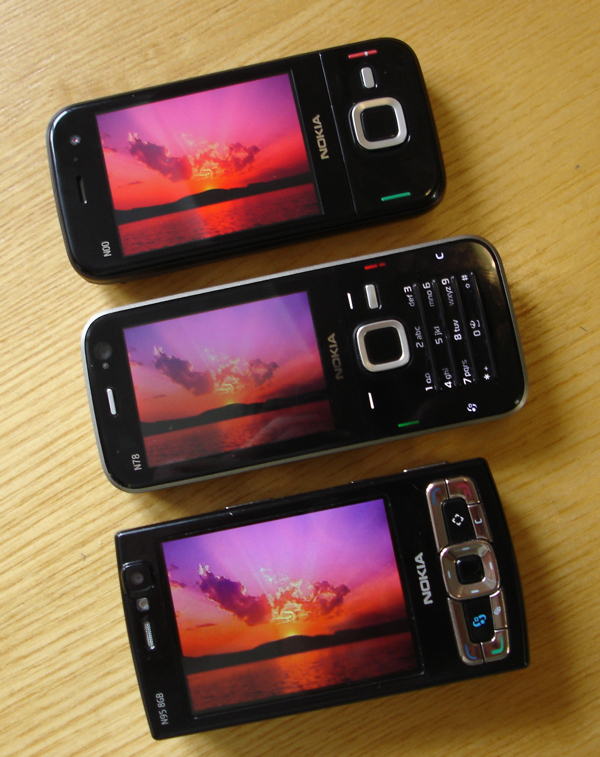
This photo gives a reasonable idea of the differences in the screens between the N85, N78 and N9 58GB
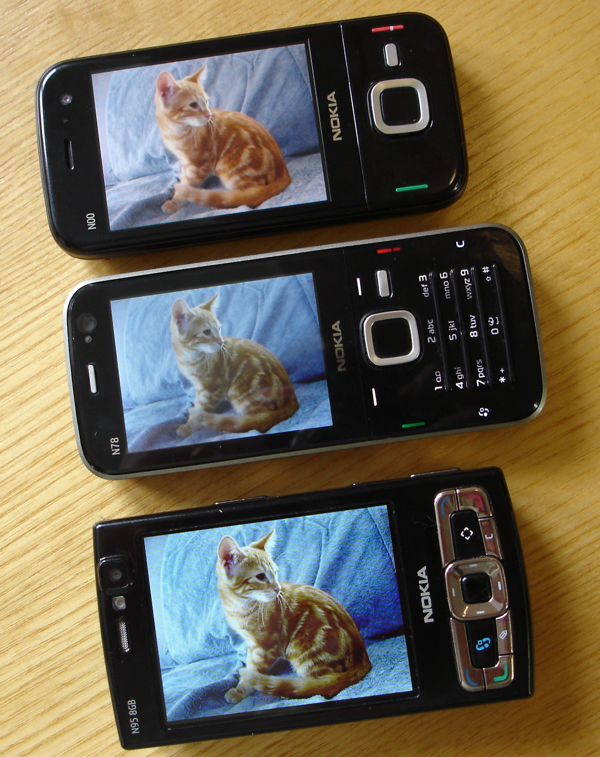
The difference is less noticeable in this photo, but it doesn't really do the AM OLED screen justice.
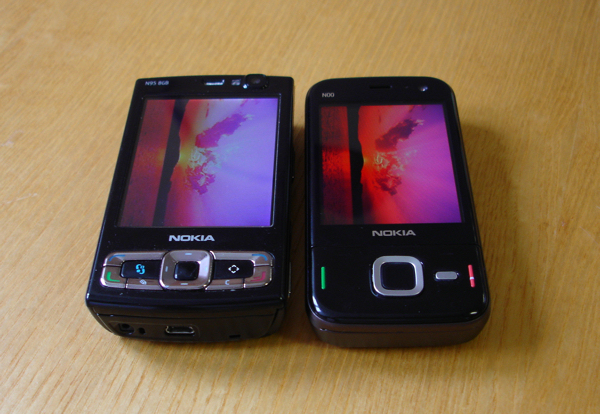
This photo demonstates the improved viewing angle of the AM OLED screen,
but also gives a good indication of the brightness.
For video the AM OLED screen is also a boon, the addred brightness and colour definition is particularly noticebale in fast moving videos. More generally any application of theme that uses dark colours benefits from the improved contrast ratio. Overall the screen is more readbale too - small fonts are less of a strain than previous devices.
Nokia N85 size - the dual slider shrinks
The N85 measures in at 103 x 50 x 16mm which makes it around 25% thinner than previous dual sliders (N95 8GB: 21mm, N96 20mm). What this means is that the N85 - slide closed, in the hand, feels much closer in size to the N78 and N79. It doesn't match the thinness of phones like the E71, but goes a long way to making the dual slide form factor more pocketable. Given that the N85 matches the N95 8GB, feature for feature, and manages to add a few extras (FM transmitter, USB charging), the N85 is an extremely impressive engineering achievement.
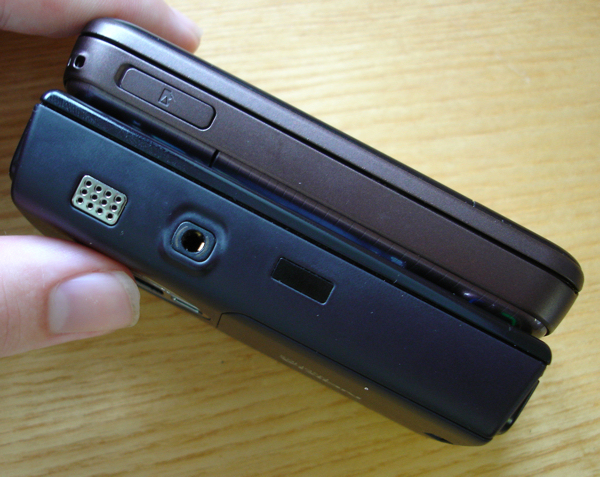
N95 8GB vs N85 thickness: the N85 is notably thinner.
There's no IrDA on the N85, but the audio jack position is much improved.
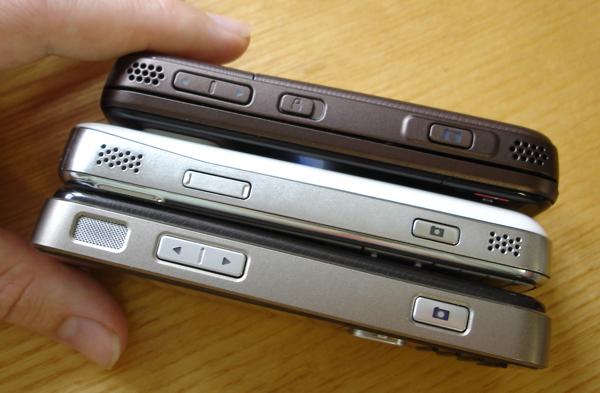
N85 vs N79 vs N78 - all these phones are similar in size. Although, of course, the N85 feels bigger
with the slide open. However the N85 is significantly heavier, which maybe a factor for some.
Charging with a difference
The N85 supports USB charging via the microUSB port found on the top of the device. The N85 will include the Nokia AC10 charger in the box, but you'll also be able to charge by connecting a standard cable to any powered USB port on any computer. This is a very welcome, and long overdue, change for the Nseries. Being able to carry around just one cable for charging and connectivity is a real boon, especially as microUSB is also used by a variety of other devices.
The N85 does not have a 2mm power port so you'll have to wave a fond farewell to all the old style Nokia chargers (although there's a good chance adaptors will be available).
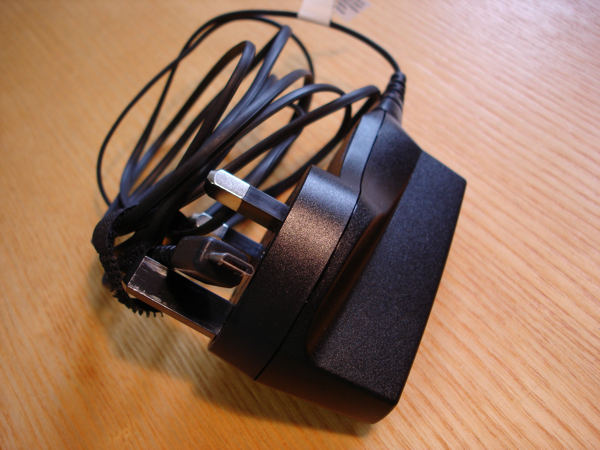
The new style microUSB charger
The N85 has a 1200 mAh battery, another improvement over the N95 family, and should be enough the last through a day even with relatively heavy usage. The power efficient properties of both S60 3.2 and the OLED screen will further boost the battery usage time.
Software suite
The N85 runs the Nseries edition of S60 3rd Edition Feature Pack 2. It is essentially the same as that found on the Nokia N78 and you can read our N78 review (part 2 and part 3) for more details.
The only difference of note is that the N85 will ship with more recent versions of Nokia's Ovi services: Nokia Maps 2.0 (N78 has version 1.2) and the full N-Gage client (N78 has a placeholder).
Concluding thoughts
The N85 may not be the giant leap forward of the N95, but it is most definitely a significant evolution; I think it is the most important in the last 2 years [for Nseries hardware]. The new screen technology, USB charging, added WCDMA bands and size reduction all add significant extra value. Those upgrading from the N95 family will also welcome the addition of an FM transmitters, RDS support in the FM radio and an upgraded version of S60.
The N85 will be a best seller - a critical factor is a reasonable price point; the N85 will launch at a price of 450 Euros (before taxes and subsidies). Competing devices, such as the Nokia N96 and Samsung I8510 (INNOV8) are likely to have a significant price premium over the N85 and this could be critical in consumer and operator take up. While the top end of power users will look to the N96 and I8510 as their next phone, the majority of people will look at the value equation of functionality against price and opt for the N85. Indeed, the N85's biggest competitor is likely to be the N95 8GB. The N85 does have a number of significant advantages over the N95 8GB in hardware terms, but the core phone and multimedia functionality is very similar.
Nokia continues to impress with its high-end hardware and still doesn't really have a true global competitor in this space. When you step back and think about what the device can do you really do appreciate that they are engineering marvels.
The N85 will be a key product for Nokia in the first half of 2009. In due course, Nokia will be announcing its first touch-enabled S60 device, which will no doubt attract a lot of media attention. Despite this, the N85 (and its sister device the N79) are far more significant overall. Touch is undoubtedly going to have a place, but the majority of users will stick with one handed, softkey based devices for the foreseeable future.
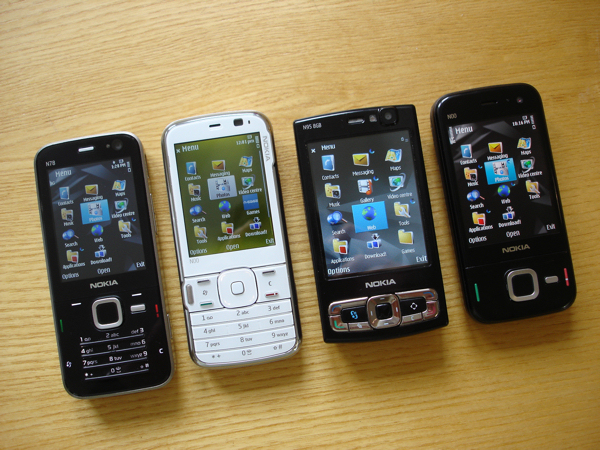
Nokia N78, Nokia N79, Nokia N95 8GB and Nokia N85
See Also
News: Nokia N85 - the dual slider evolves: OLED, USB charging, tri-band WCDMA
Gallery: Nokia N85 (including high resolution images of photos on this page)
Review: Part One of the N85 Review of the production/retail unit.
